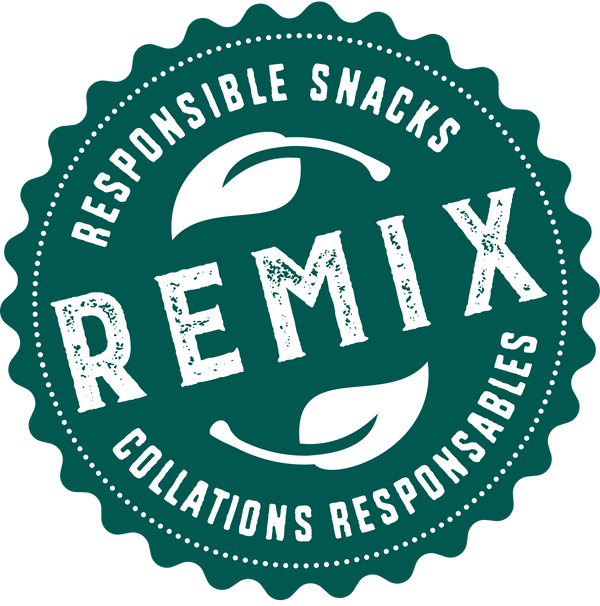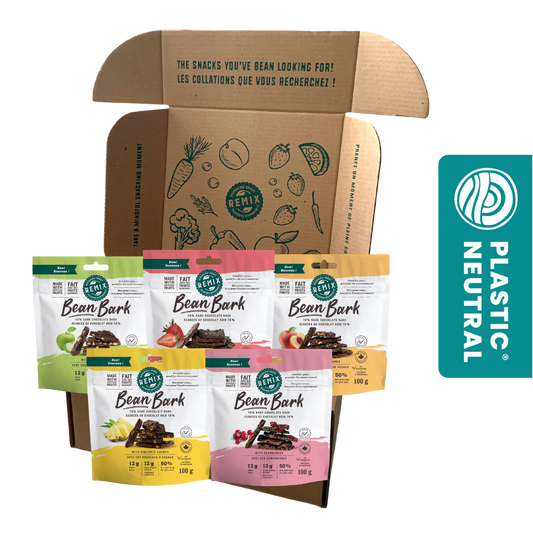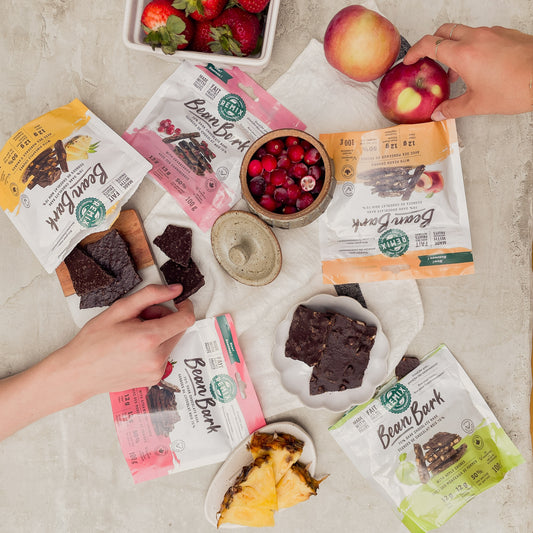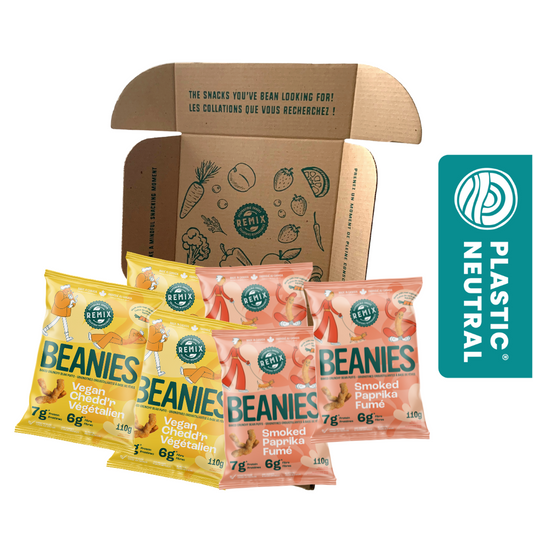
Written by: Cherry Zhou, September 2020
Common False Beliefs about Best-Before Dates
Many people have the misconception that a food is not safe to eat once it is past its "best-before" date. Why do I call it a misconception? Because this statement is totally false! In fact, the best- before date is not an indicator of food safety neither before nor past its indicated deadline (1). In other words, eating foods that have passed their best-before date does not mean that you will get sick. Similarly, foods that have not reached their best-before date do not have a guaranteed freshness.
- Did you know? It is not illegal to sell foods that are past their best-before date.
At this point you are probably wondering ...
What do Best-Before dates Really Mean?
Best-before dates are found on prepackaged products. They indicate the anticipated time that an unopened food product can last in terms of quality if stored under appropriate conditions. For example, best before dates do not apply to a chocolate bar in a crazy hot 30oC room (1). Therefore, the food might have changes in terms of its freshness, taste, nutritional value or any other qualities claimed by the manufacturer. For example, after its best-before date, your orange juice might lose some of its vitamin C content, or your favorite chocolate might not provide you the same mouthfeel.
Nevertheless, it does not mean that you will get terrible diarrhea if you consume it. However, if you decide to eat a food that smells weird with molds spotting it, you might feel the stomachache coming even though the food has not reached its best-before date yet! This is why I mentioned earlier that best-before dates do not guarantee freshness.
How do I Read Best-Before Dates?
Although we are used to seeing dates and times on all sorts of documents and devices, best- before dates might not always be easy to read. Let’s test your knowledge.
If you see "21 MA 20", what does it mean? Is it:
- March 21st, 2020
- May 21st, 2020
- March 20th,2021
- May 20th, 2021
Unsure? Confused? Let me help you out:
First, the correct order for labelling is: year, followed month, then followed by day.
Second, the official language or shortcut for month are the following:
| JA: January | FE: February | MR: March | AL: April |
| MA: May | JN: June | JL: July | AU: August |
| SE: September | OC: October | NO: November | DE: December |
As you would have guessed it by now, the correct answer is “D”. Did you get it right?
Now that we understand best-before dates, let's dive into expiration dates.
What are Expiration Dates?
Another phrase that we hear very often is “it’s expired” when someone realizes that a food has gone over its best-before date. However, best-before dates and expiry dates are not interchangeable terms (2). In fact, they are NOT the same thing! The table below explains some of their main differences.
| Best-before Dates |
Expiration Dates |
|
|
|
Example:
|
Example:
|
As you may have noticed, expiration dates only appear on a few types of products. Very often, these are products that people rely on to stay healthy. Consequently, their nutrient content needs to be 100% accurate to its claim at the time of consumption. If we think about it, it would be very dangerous to feed a baby every day with a formula that has only half of what it claims. Indeed, these are the kind of foods that cannot “have lost some of their vitamin C content”.
What Foods Do Not Need a Best-Before Date?
Just like everything in life, there are always exceptions to the rules. The following are some exemptions to the 90 days rule (3):
- Fresh fruits and vegetables
- Prepackaged fresh fruits and vegetables
- Prepackaged foods by restaurants
- Prepackaged donuts
As mentioned earlier, a best-before date is not mandatory for foods that have an expected shelf life greater than 90 days, such as canned foods and spices.
Now that we know that foods are still good to eat past their best-before dates (but not their expiration dates), you can save money and food by not throwing out foods that are past their best-before dates!
Other Tips to Reduce Food Waste
-
Put foods in the freezer to extend their storage time.
Unsure of what is freezable? Look at the frozen foods section next time you're out doing groceries. Because if they do it at the store, then you can do it at home!
- Buy foods that are on sale
Grocery stores tend to have discounts when foods get close to their best-before dates. Not only does it effectively prevent food waste, but it's also a great way to save money, especially if you are shopping on a budget. Buy in bulk and freeze.
How Long Can You Keep Food in Your Freezer?
| Food | Refrigerator Storage Time |
Freezer Storage Time |
| Leftovers | 2-4 days | 4-6 months |
| Fresh meat (beef. pork, lamb) | 2-4 days | 8-12 months |
| Ground meat | 1-2 days | 2-3 months |
| Poultry pieces (chicken, turkey) | 2-3 days | 6 months |
| Egg (without shell) | 2-4 days | 4 months |
| Egg (in shell) | 3-4 weeks | don’t freeze |
| Unopened milk | best-before date | 6 weeks |
| Opened milk | 3 days | don’t freeze |
| Unopened yogurt | best-before date | 1-2 months |
| Firm cheese | 5 weeks | 3 months |
| Precut Fruits | 3-5 days | 10-12 months |
- Use "imperfect" or "ugly" foods in smoothies or other recipes.
Just like many of the misconceptions around best-before dates and expiry dates, “ugly” foods are not equal to poor quality (5).
Remix, for instance, incorporates upcycled fruits into their chocolates. Those ugly fruits would have otherwise been thrown away due to their imperfect appearance. So grab yourself a bag of delicious chocolates and help reduce food waste!
To further say no to food waste, check out this blog post.
References
-
Government of Canada. (2019). Date labelling on pre-packaged foods. Retrieved from https://www.inspection.gc.ca/food-safety-for-industry/information-for-consumers/fact-sheets-and-infographics/date-labelling/eng/1332357469487/1332357545633
-
Government of Canada (2013). Best Before and Expiration Dates on Foods – What do they mean? Retrieved from https://healthycanadians.gc.ca/recall-alert-rappel-avis/hc-sc/2012/13660a-eng.php?_ga=1.232986716.339146496.1415224617
-
Government of Canada. (2019) Date markings and storage instructions on food labels Requirements. Retrieved from https://www.inspection.gc.ca/food-label-requirements/labelling/industry/date-markings-and-storage-instructions/eng/1328032988308/1328034259857?chap=0
-
Government of Canada. (2020). Safe food storage. Retrieved from https://www.canada.ca/en/health-canada/services/general-food-safety-tips/safe-food-storage.html#a5
-
U.S. Food and Drug Administration. (n.d.)Tips to Reduce Food Waste. Retrieved from https://www.fda.gov/food/consumers/tips-reduce-food-waste





